Although the year started with cautious optimism that costs would continue to go down, the latest data from the U.S. Bureau of Labor Statistics show an increase in construction input prices. Specifically, "construction materials prices increased 0.4% in...
MEP Innovation Conference 2023
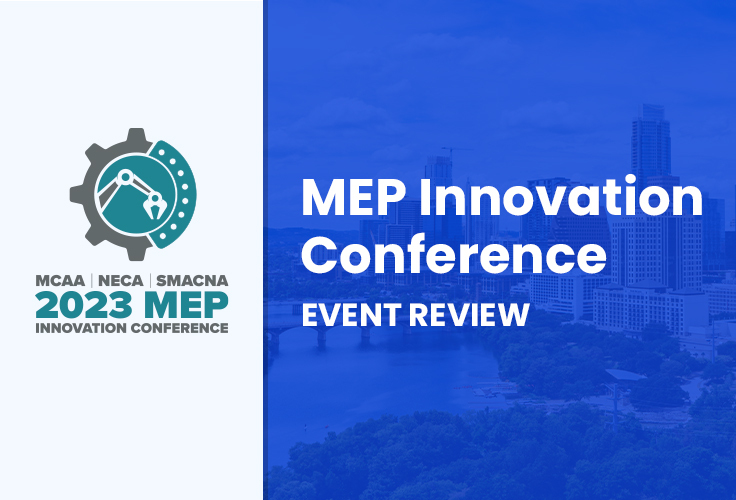
Where else can you find live music, great food, and truly inspiring conversations on innovations and technology for the MEP industry? Answer: The MEP Innovation Conference 2023, which took place in Austin, Texas last week.
Hosted by the National Electrical Contractors Association (NECA) , Mechanical Contractors Association of America (MCAA), and Sheet Metal and Air Conditioning Contractors’ National Association (SMACNA)the conference was a great success.
The real highlight of the conference was the impressive array of sessions that were offered. StructShare was in attendance and had the opportunity to attend a number of these sessions, which provided valuable insights into the latest developments in construction technology and adoption by the specialty contractors. It is truly amazing to see how technology is shaping the industry.
StructShare is at the forefront of this, providing innovative solutions for procurement and material management for specialty contractors including those in the MEP trades.
📸 View more images on our MEP Innovation Picture Collection Page 📸
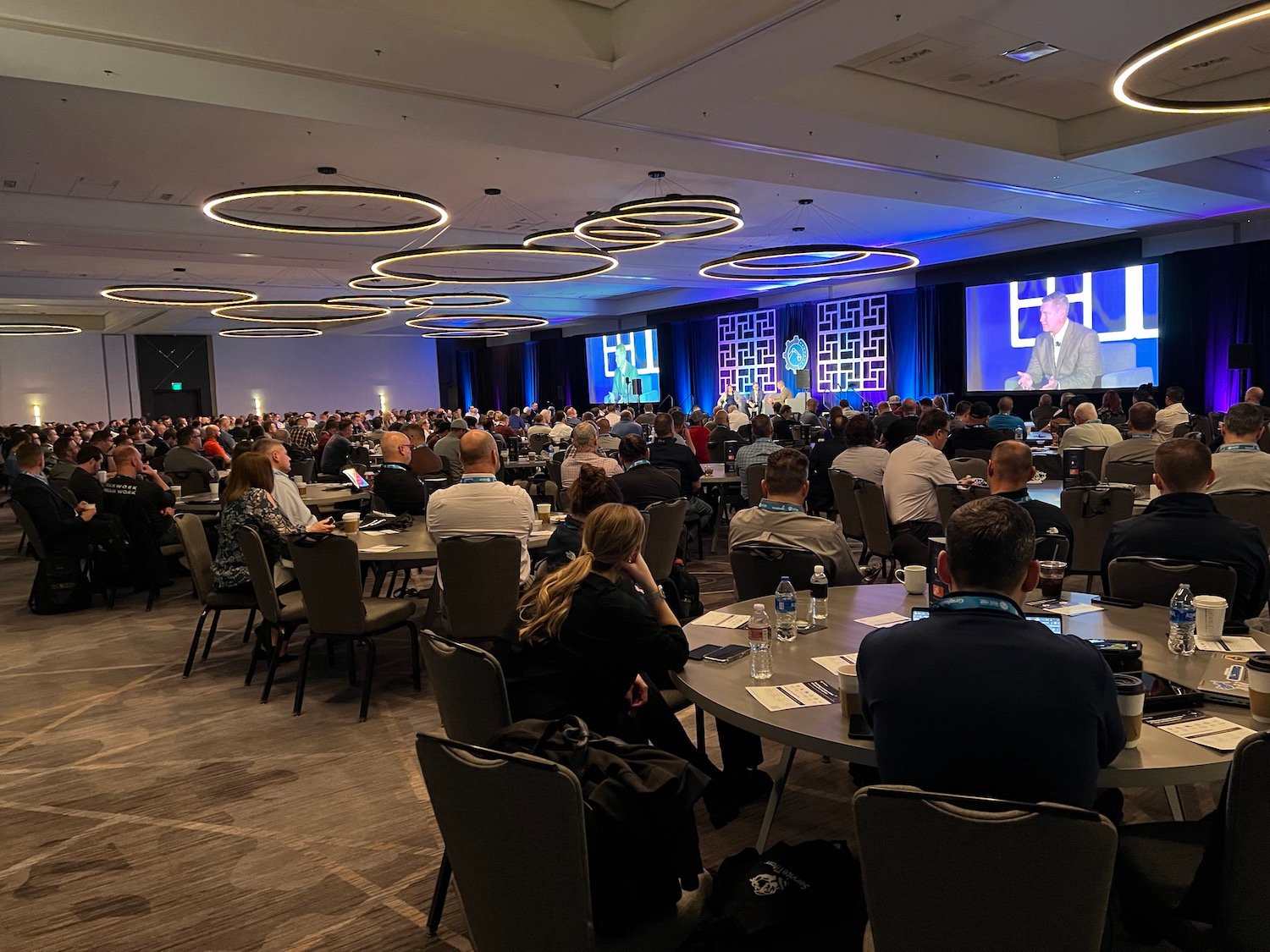
Panel Discussion: Where the Culture of Innovation Starts
This panel discussion focused on the current state of the construction industry and the role of technology and innovation in driving change. Sasha Reed of Procore , stated that the industry has not yet transformed but has the opportunity to do so; however, simply adopting new technology is not enough to drive this transformation, and it is needed from leadership.
Lisa O'Brien, also with Procore who self-described herself as “an industry outsider,” highlighted that the construction industry is traditionally underinvested in technology, with only 0.5-2.0% of tech spend compared to 4.0% in other industries. She also noted that most change initiatives fail for human reasons, not bad technology. It was pointed out that only 20% of change initiatives are successful.
The panel discussed the concept of a culture flywheel, which is a way to ensure that everyone is "rowing in the same direction" and that people care about their job, the customer, and everyone else. Innovation happens here, and problems get solved. If it works, you reinvest, and the flywheel goes on and on.
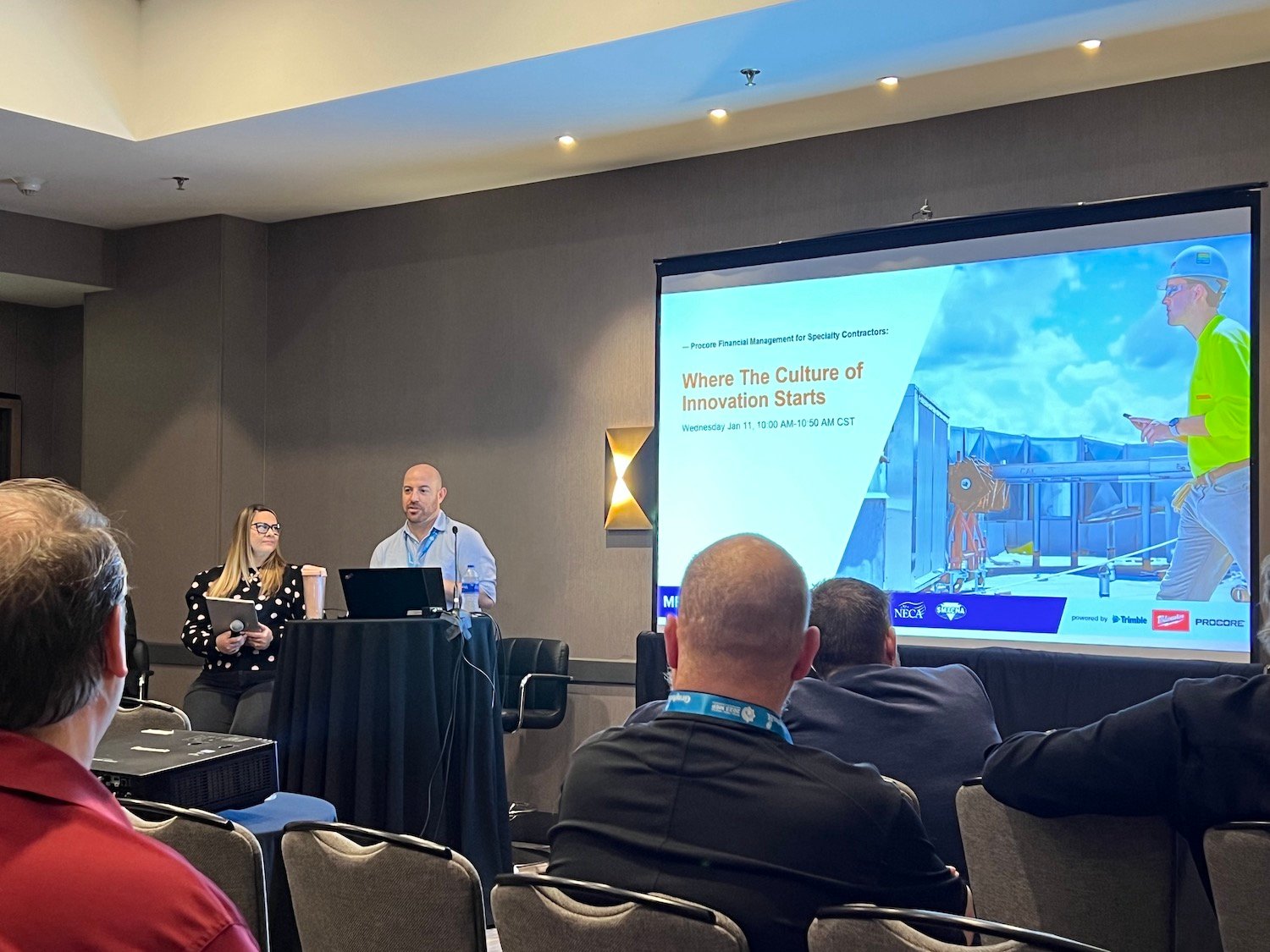
The panel, which was led by Procore's Nate Tockerman, also discussed what innovation looks like to contractors today and emphasized the importance of keeping the focus on people and considering policies around remote work and communication. They also discussed the importance of understanding the human aspect of change and that the change of organization will outpace human change. If the industry can figure out the human issue, then real change will happen.
The panel also provided advice on how to take what was learned back to an organization. They suggested that change starts at the top “100%.” This means finding an executive sponsor who can make the change, getting connected to resources, not doing this work solo, making it a mission to “make the math work”, and getting with peers looking to do this work.
Keynote: Construction Robotics and the Potential for MEP Trades
Alice Leung from Bricks and Mortar Ventures and Vivin Hegde from Zacua Ventures discussed the current state and future of construction robotics in a keynote presentation. They highlighted that the construction industry is traditionally underinvested in technology, but this is changing as the complexity of projects has increased, new regulations have been introduced, and labor shortages have risen.
When the audience was asked “what’s a robot” the first answer was one word: Terminator. So they defined it: a robot is "a type of automated machine that can execute specific tasks with little or no human intervention and with speed and precision." They noted that there are currently 63 startups working in construction robotics, and that the industry is becoming more relevant now due to declining technology costs, reduced development time for robotics, rapidly rising labor shortages, increasing complexity of building, and new infusion of capital and talent.
They also noted challenges to implementing robots in the field, including localization difficulties, the need for ruggedized hardware, and the ever-changing site conditions. The panelists emphasized that technology should not be implemented for the sake of technology, but to solve a specific pain point; a common theme throughout the conference.
Break Out Session: Mapping Your Tech Stack - A Practical Guide
In this presentation, Jonathan Marsh of Steel Toe Consulting discussed the importance of mapping out a company's technology stack, which is the combination of technologies a company uses to build and run an application or project.
He explained that mapping out the technology stack can help connect people to technology, provide an at-a-glance understanding of the technology, foster collaboration, enable measurement and analytics, provide consistency, help in training and recruitment, provide direction, help avoid redundancy and identify real problems.
Jonathan also discussed the importance of understanding "jobs to be done" and identifying what technology is essential to the company. One should consider thinking about what the technology does for the company rather than its "title." The idea of “humanizing the technology” means to ask as if the software were a person would you hire it and what would be your expectations. It was emphasized that too many details can diminish the usefulness and longevity of the diagram. A reference article "hiring your next technology" was also recommended. The topic of communication tools and how they can be used efficiently and avoid wasting time was also touched upon.
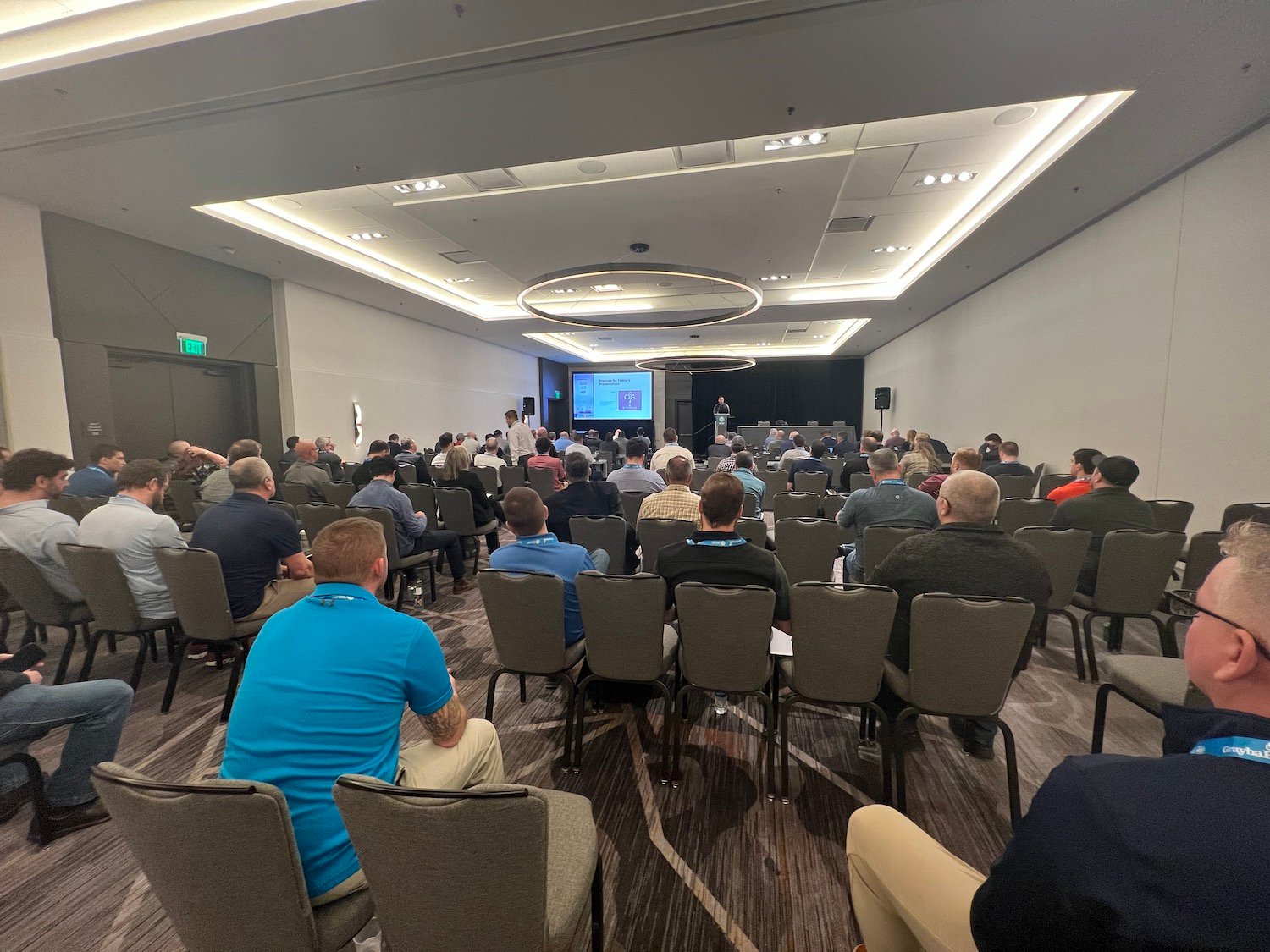
Panel Discussion: Tech Stack Case Studies
The panel discussion was focused on the implementation and adoption of technology in the construction industry. The panel members, Sean Lazarian of Electric Service and Supply Co, Travis Voss of Helm Mechanical, and Jonathan Marsh, discussed the importance of starting with a demo of any tool they are considering. They noted that it is rare for someone to say they need a specific technology solution, but they often express a problem they have and that they hope to solve.
The panel discussed the challenges faced when trying to implement new technology and noted that the process can be too heavy at times. They suggested assigning two people: a Champion, someone who is a "crazy tech guy" and a Project Manager, someone who likes to check boxes to keep the implementation on track. They also discussed how to remedy problems that arise when implementing new technology and suggested that when one learns internally and then tries to train others, they might be doing things not with the best practices; only later is a better way discovered and then re-learning must take place.
Important to any technology conversation is how to handle people who won't use the technology or say they will but won't. They acknowledged that it can be challenging. It’s made more difficult when the Champion has influence but no authority to make people do stuff.
An audience member mentioned the "fatigue of bringing in new innovations is real." People get burned out learning and implementing new tech especially when you have to tweak a process. (Quick plug for StructShare. Our customer at Sunshine State Electric said in this customer story: “We quickly saw the benefits because StructShare works with OUR process so we do not have to change to THEIR process.” )
The panel also talked about the importance of fixing problems people have vs extending capabilities. They also mentioned the use of "Tiger Teams" to implement and champion new tech. If process change is required, the chance of success goes way down. Remember: if you can't convince people, it's a bad sign.
Conclusion
In conclusion, we want to thank NECA, MCAA and SMACNA for bringing together such an all-star group of presenters, sponsors, and practitioners.
Overall, the construction industry has a long way to go in terms of technology adoption and innovation; however, it is clear that there is a growing awareness and willingness to change. By focusing on the people and processes within the industry, and by using technology to solve real problems, we can work towards a brighter future for the construction industry.
StructShare believes that we can be part of that positive change with our procurement and material management solution. We’d like you to take the advice from the Tech Stack Case Studies presentation and reach out for a demo.
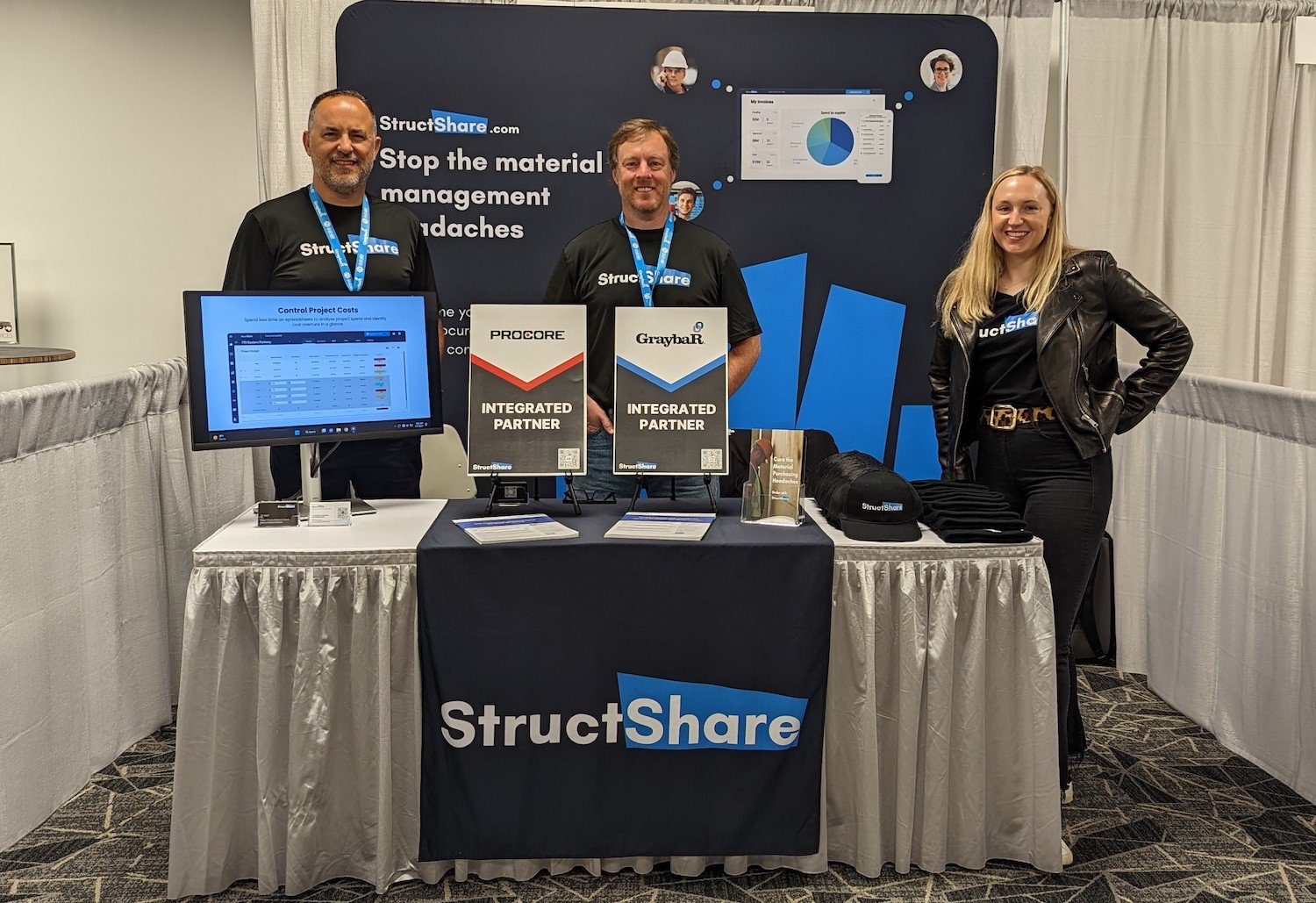
Get the latest insights on materials management for modern construction jobsites.

What the increase in Material Prices means to you
by Christian Erickson | Apr 12, 2024 | Trades 101 Blog, Material procurement, Construction material management, Invoicing, Materials Procurement, Job Cost Accounting

Green Building Success: Sustainable Strategies for Construction
by Lexi Garden | Mar 14, 2024 | Trades 101 Blog, News, Material procurement, Materials Management, Construction material management, Materials Procurement, Trades Blog
In the modern construction landscape, sustainability isn't just a buzzword—it's a necessity. As the industry struggles with environmental challenges, adopting green building practices becomes necessary for long-term success. We delve into actionable...
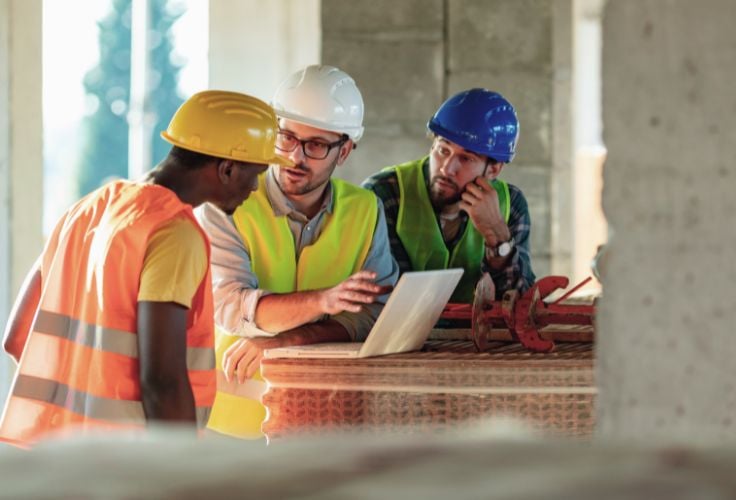
7 Reasons Technology Drives Successful Projects
by Christian Erickson | Feb 28, 2024 | Trades 101 Blog, News, Material procurement, Materials Procurement, Trades Blog
Specialty trade contractors face unique challenges in purchasing and material management that often go beyond the capabilities of basic tools like email, text, and spreadsheets. Learn why embracing more advanced tools is essential for successful projects and...


